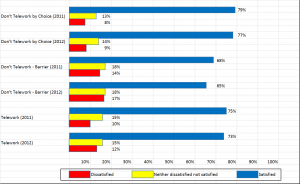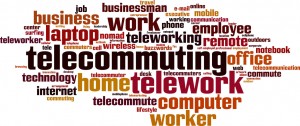Effective Communication In The Workplace
 Have you ever walked out of a meeting scratching your head and wondering, “What was that all about? What exactly am I supposed to do? What’s the goal of our discussion?” We’ve probably all been there. It comes as no surprise that effective communication is one of the most important issues in the workplace. Strong communication helps everyone feel heard and understood, resulting in a positive, encouraging, and productive environment. On the other hand, ineffective communication causes ideas to fall flat due to lack of follow-through, frustration, and an overall decline in morale.
Have you ever walked out of a meeting scratching your head and wondering, “What was that all about? What exactly am I supposed to do? What’s the goal of our discussion?” We’ve probably all been there. It comes as no surprise that effective communication is one of the most important issues in the workplace. Strong communication helps everyone feel heard and understood, resulting in a positive, encouraging, and productive environment. On the other hand, ineffective communication causes ideas to fall flat due to lack of follow-through, frustration, and an overall decline in morale.
If you feel like your team is stuck in a communication rut or you’re just looking to improve your skills (and we all can!), here are some things to keep in mind and strategies to employ:
Give Undivided Attention: Whether it’s a group meeting or one-on-one, offering full attention to those you’re with goes a long way. How often have you had a conversation with someone who continuously looked down at his or her phone or seemed lost in another world? Lack of focus devalues conversations and causes people to tune out.
Remember to Listen: Listening may not sound like a component of communication, but it is one of the most important ingredients. Being an effective communicator means listening, as well as talking. It sounds easy, but it can take some practice. How often do you find your mind wandering during a meeting or a conversation? It can be helpful to keep a mental checklist of all the main points the other person makes. When the conversation is over, try to recall at least three important things the person said. Get in the habit of doing this until listening is second nature.
Be Mindful of How You’re Communicating: Body language and tone contribute a great deal towards the effectiveness of your message. Maintain a relaxed stance and facial expression, rest your arms by your sides rather than crossing them in front of you, and make eye contact. Remember that words only make up a fraction of your message.
Follow Up in Writing: A lot of information and ideas are thrown around during meetings and it can be challenging for everyone to remember what was shared. Prior to meetings, designate someone to take notes and then assimilate this information into a concise email. Having a follow-up and refresher is an important step to make sure everyone is on the same page.
Effective communicating is more than just talking; it’s about connecting with the people around you. It’s integral to team development, company culture, employee engagement, and innovative thoughts and ideas. If you’d like to improve the communication process in your office or are interested in doing a “wellness check”, we’re armed with lots of strategies and ideas to help. Please call Leah M. Joppy and Associates at 301-670-0051 or email us at leah@lmja.com to learn more.
Effective Communication With Remote Employees
 Remote work is becoming more and more common in the modern workplace and the number of remote workers is increasing every year. Technology has made it easier to embrace remote work, but it has also brought about new challenges when it comes to team communication. Here are some tips to help the wheels of communication keep rolling when you don’t work under the same roof:
Remote work is becoming more and more common in the modern workplace and the number of remote workers is increasing every year. Technology has made it easier to embrace remote work, but it has also brought about new challenges when it comes to team communication. Here are some tips to help the wheels of communication keep rolling when you don’t work under the same roof:
- Establish standards for communication to ensure everyone is on the same page.
- Make sure transparency is a priority. Share all documents, decisions, upcoming deadlines, etc. in one area.
- Find a balance between over-communicating and not communicating enough.
- Make sure new remote team members get to know the rest of the team via video chat.
- Use real-time communication technology.
- Be concise and get to the point at the beginning of messages!
- Always proofread and edit messages to avoid confusion.
- Give space when needed. If remote team members need to take a break from being accessible online to get something done, make sure they know they can do it.
Remote team members add another layer of challenge when it comes to workplace communication. But by using some strategic tactics, it doesn’t have to result in a communication meltdown! For more tips and advice on how to improve communication with remote employees, please call Leah M. Joppy and Associates at 301-670-0051 or email us at leah@lmja.com.
Shrinking Space
 The OMB, Office of Management and Budget, is putting federal office space and excess property into a deeper freeze. Announced Wednesday, April 1, OMB is requiring civilian agencies and the Defense Department to create a plan for reducing their footprint over the next 5 years. David Mader, the OMB controller announced two mandates: Set a target for reduction in square footage and adopt space design standards for any future development.
The OMB, Office of Management and Budget, is putting federal office space and excess property into a deeper freeze. Announced Wednesday, April 1, OMB is requiring civilian agencies and the Defense Department to create a plan for reducing their footprint over the next 5 years. David Mader, the OMB controller announced two mandates: Set a target for reduction in square footage and adopt space design standards for any future development.
One Tactic. Reducing the total real property footprint will most likely result in more expanded teleworking for agencies and the DOD. If agencies cannot lease or buy new space, they must consolidate. The reduction plan has already had positive results since it was announced in 2013. This five year plan will likely shrink the overall footprint even more.
Successful Teleworking. So how do agencies heed this call for a smaller footprint? Achieving a successful telework program will certainly help. And according to the Report to the Congress on the 2013 Status of Telework in the Federal Government, most successful telework programs have been achieved through organizational change. When agencies actively work toward change management, goal setting becomes an essential practice. Goals that are SMART, that is, Specific, Measurable, Achievable, Relevant and Time-bound, help provide the motivation to facilitate progress. So an agency that is serious about promoting a change in work toward teleworking can gauge its success and effectiveness of the program by setting SMART goals.
Measuring Success. What goals can your agency use to measure its success? Here are some examples.
- Increase the eligibility for telework positions
- Set a number (percentage) of the employees that you expect to telework consistently in the coming year
- Set a number (percentage) of the employees that you expect to telework during certain situations in the coming year
- Develop and monitor a survey quarterly to measure the effectiveness of teleworking
- Measure the cost savings of telework
- Add a telework performance goal to employee reviews
- Identify Best Practices of telework employees and publish
Proof of Success. Over the next five years, as OMB requires agencies to reduce their footprint. Assessing your goals and results will be key. Developing clear goals, and meeting them, is possible with the right focus.
Need Help? Leah M. Joppy & Associates can help your agency identify needs and solutions. Then we’ll put together the right program for you – and get results! Give us a call at (301) 670-0051 to discuss an approach that will work for your agency.
Telework – What Happens?
 What happens when employees telework? Since telework has become an important organizational change, not only in the Federal Government but also in the private sector, it’s important for all organizations to envision the success of the effort and measure the results. In a recent report, “Status of Telework in the Federal Government – Report to Congress,” the US office of Personnel Management noted an improvement in employee attitude as a result of telework capabilities.
What happens when employees telework? Since telework has become an important organizational change, not only in the Federal Government but also in the private sector, it’s important for all organizations to envision the success of the effort and measure the results. In a recent report, “Status of Telework in the Federal Government – Report to Congress,” the US office of Personnel Management noted an improvement in employee attitude as a result of telework capabilities.
Measuring the Improvement in Employee Attitude. The Federal Employment Viewpoint Survey (FEVS) shows the potential for telework to influence important employee attitudinal and perceptual variables. The survey looked at employees who telework, those who don’t because of a barrier of some sort, and those who do not telework by choice. Demonstrated in the report is the value of autonomy – “I get to make the decision, to telework or not.” When employees have a choice, job satisfaction increases. Those employees who face barriers to telework reported lower job satisfaction scores. Typically, their attitudes toward the organization and their supervisors are less positive.
Academic research indicates that telework program participants are more likely to exhibit job satisfaction and improved performance. The FEVS survey noted similar findings. There was a larger percentage of teleworkers who reported satisfaction with their jobs than those who were not able to telework. In 2011, those figures were 75% vs 68%, and in 2012 the figures were 73% vs 65%. The survey seems to suggest that existence of telework policies benefits the entire workforce in indirect but positive ways.
In the 2012 FEVS survey, 68% of the respondents reported satisfaction with their jobs. And 15% reported dissatisfaction. The results also show that there is a decline in the percentage of job satisfied employees between 2012 (68% ) and 2011 (71%). This general decline is also reflected in a comparison of teleworker job satisfaction data – reporting 68% job satisfaction in 2011 and 65% in 2012.
Please click on the chart below for more information on job satisfaction.
Tip: Managing Teams
Last month we provided a few tips on successful teleworking. Here are some key tips on Managing Teams.
- Train your team. While you may feel that your employees should know their job, training your employees for working on a team will help build successful teams.
- Keep your team focused. Putting a team together, and then not following up on their progress is asking for trouble. Instead, install a project management system or some type of follow-up plan that allows you to keep the team focused and on task. Your time will be well-spent; your team will be successful.
- Create a timeline. What is your vision? Working with the team, create quarterly touch points. Breaking a project down by quarters makes it easier to reach intermittent goals – assuring success for the overall project.
If you would like more information on Development issues, including Teamwork and Management, please give LMJA Associates a call at 301-670-0051 or email us at Leah@LMJA.com.
Successful Teleworking Tips
Successful Teleworking
 In order for Teleworking to be successful, there should be a plan. When there is, it’s obvious that the agency wants it to work. Certainly, they don’t want telework to negatively impact careers. We uncovered a few tips for successful teleworking.
In order for Teleworking to be successful, there should be a plan. When there is, it’s obvious that the agency wants it to work. Certainly, they don’t want telework to negatively impact careers. We uncovered a few tips for successful teleworking.
- Keep your work relationships intact. Touch base with your team members often. Reschedule your commuting days as needed. Get feedback weekly from your supervisor. And make sure he/she knows your career goals.
- Keep your career on track. Make the important meetings, even if it means changing your schedule. Be flexible. And review your emails – be sure they are tactful and diplomatic. Update your status often and take credit when it’s appropriate. Be clear about your career goals.
- Set rules. It’s easy to be too available at home. It’s up to you to set work hours, when and how you can be interrupted and what areas are off-limits. And while you’re setting rules, make a schedule and stick to it. When you telework, it’s easy to slack off without thinking, or you can become a workaholic. Neither option is good. Balancing your work and home life, as much as you can, will make you happier and more productive. And your telework plan will be successful.
In a report to the Congress on the status of telework in the Federal Government, efforts to promote telework were reported. READ MORE on the effectiveness of agency-wide telework efforts.
Teleworking: Report To Congress
In a report to the Congress on the status of telework in the Federal Government, efforts to promote telework were reported. As a rule, agencies are tasked with promoting telework efforts. Each agency has the opportunity to select from a list of efforts, as well as to detail the specific nature of these efforts. You can see below that emphasizing telework as a part of COOP is the most commonly selected option. Many agencies also made use of agency-wide techniques such as emails and meeting to advocate for telework. See below for more information.
| Agency Management Efforts to Promote Telework in 2011 and 2012** | ||
| In what ways has your agency’s management promoted your telework program | No. of agencies in 2011 | No. of agencies in 2012 |
| Aligns telework with agency strategic goals and mission | 35 | 41 |
| Advocates telework in agency-wide meetings (e.g., all-hands meetings) | 45 | 46 |
| Uses telework goal-setting and measurement hold managers accountable | 12 | 15 |
| Emphasizes telework as part of COOP (Continuity of Operations Plan) events | 66 | 68 |
| Conducts special telework events (e.g., telework awareness weeks, telework drills) | 26 | 32 |
| Transmits agency-wide emails of support | 40 | 43 |
| Develops signs/posters | 13 | 16 |
| Other | 25 | 32 |
| Our agency has not taken action to specifically promote telework in the past year | 10 | 9 |
** This information was taken from the United States Office of Personnel Management Report on the “Status of Telework in the Federal Government.”

